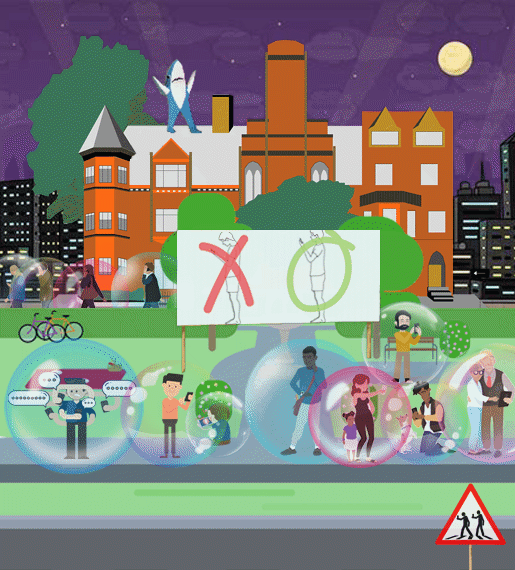In an age where social media platforms have become the digital town squares, the right to express oneself freely has increasingly come under scrutiny. The democratization of content creation brought about by these platforms has given rise to a new challenge: the subtle, yet pervasive, influence of revenue tactics on user censorship. As social media giants wield the dual swords of revenue generation and community guidelines, users find themselves navigating a complex web of self-expression and self-censorship.
Understanding the Revenue Model of Social Media Platforms
Central to the operation of most social media platforms is an ad-supported revenue framework. These entities accrue income through the sale of promotional spaces to businesses aiming to tap into the vast, diverse audience these platforms host. The foundational principle here is simple: the more captivating and widespread the content, the larger the audience it draws. This, in turn, increases the platform’s attractiveness to potential advertisers seeking to maximize their visibility.
Such a model intrinsically influences the kind of content that gets prioritized by the platform’s algorithms, favoring pieces that encourage prolonged engagement and interaction. This prolonged user engagement translates into increased ad exposure, boosting the platform’s revenue. Consequently, content that aligns with these engagement-centric goals is more likely to receive promotion, whereas content that doesn’t align is often less visible or even suppressed.
This prioritization mechanism subtly dictates the nature of content that flourishes, directing creators towards producing what is deemed more ‘advertiser-friendly’, thereby shaping the landscape of online discourse without an overt dictation of content parameters. This environment sets the stage for an intricate dance between content creation and the platform’s revenue imperatives, highlighting a complex interplay where economic motivations subtly influence the digital expression arena.
The Role of Algorithms in Content Moderation
To sift through the immense volume of content generated every second, social media platforms deploy algorithms designed with efficiency in mind. These automated systems are tasked with the monumental job of content moderation, filtering through posts to identify and remove those that breach the platforms’ community guidelines or are considered unsuitable for advertising partners. While this system of moderation is crucial for maintaining a user-friendly environment, it operates within a veil of opacity. The exact workings of these algorithms, the criteria they use to judge content appropriateness, how they determine what gets promoted or demoted—are often shrouded in mystery, leaving content creators guessing about what might trigger a negative response.
This lack of transparency leads to a cautious approach among users, who may preemptively alter or withhold their content to avoid potential flags or sanctions from the platform. The fear of having one’s content demonetized, shadow-banned, or outright removed can significantly influence the nature of what is shared online. In an environment where visibility and engagement are key to creator success, the uncertainty surrounding content moderation practices can discourage users from exploring contentious topics or expressing opinions that might be perceived as fringe or controversial.
As a result, the indirect guidance provided by these algorithms shapes not only the content landscape but also the boundaries within which users feel safe to express themselves. The reliance on algorithmic moderation, while practical for managing vast amounts of data, inadvertently pressures users towards a narrower path of expression, guided by an unseen hand that prioritizes platform and advertiser interests.
Advertising Dollars and Anti Freedom of Expression
Advertisers’ preference for associating their brands with content deemed “safe” and uncontroversial exerts a profound influence on the operational policies of social media platforms. This dynamic introduces a complex layer of indirect censorship, as platforms navigate the tightrope between facilitating open expression and attracting lucrative advertising contracts.
The crux of this issue lies in the implicit demand for content environments that do not risk the advertiser’s image, leading to the implementation of content guidelines and moderation policies that disproportionately favor non-controversial subject matter. In practice, this results in a subtle yet significant shift in the content ecosystem towards narratives and discussions that align with a broadly acceptable norm, sidelining more divisive or challenging viewpoints.
This advertiser-driven content curation model poses unique challenges to the principle of free expression. Platforms, in their bid to remain appealing to advertisers, may adopt an overly cautious approach in content moderation, sidelining material that, while not unlawful or fundamentally harmful, diverges from mainstream or advertiser-approved narratives. The effect of this is twofold: firstly, it places an undue burden on creators to self-regulate or sanitize their content, lest they fall out of favor with the platform’s content promotion mechanisms; secondly, it cultivates an environment where the diversity of thought and the robustness of public discourse are compromised for commercial gain.
The alignment of content moderation policies with advertiser preferences, therefore, not only influences the visibility and viability of diverse voices but also subtly reshapes the contours of online free expression, prioritizing commercial interests over a truly open digital public square.
Manipulative Strategies Used by Social Media Platforms
Social media platforms deploy a variety of subtle mechanisms designed to regulate user behavior and content without overt censorship. A notable technique is the implementation of the shadow ban, a method where a user’s content is silently restricted, severely limiting its reach and engagement without any notification to the user. This creates an environment where users are left to wonder why their content fails to achieve the expected interaction, leading to self-censorship in an attempt to align more closely with the platform’s undeclared preferences.
Another tactic involves the systematic demotion of content or profiles that challenge the platform’s or advertisers’ definitions of acceptable discourse. By reducing the visibility and impact of such content, social media entities can effectively control the narrative without the need for explicit content removal. This not only discourages users from addressing controversial or divisive subjects but also fosters a culture of conformity, as creators adjust their content to ensure it meets the opaque criteria set by these platforms.
Additionally, the use of ambiguous community guidelines contributes to this landscape of uncertainty. These guidelines often provide broad definitions of what is considered unacceptable, giving platforms considerable leeway in determining what content is subject to restriction. The vagueness of these policies places an additional onus on creators to navigate these blurred lines carefully, encouraging a cautious approach to content creation.
Through these strategies, social media companies subtly influence the ecosystem of online discourse, guiding users towards a narrow path of expression that aligns with the platforms’ commercial interests and operational policies, without the need for direct intervention.



Pressure to Conform: Social Media’s Influence on User Behavior
The intricate web woven by social media platforms—through the balancing act of adhering to advertiser preferences while curating content—casts a significant shadow over user behavior. Creators and users alike face an invisible yet palpable pressure to mold their expressions within an unofficial framework of acceptability. This phenomenon is not born out of direct censorship but emerges from the anticipation of potential repercussions such as reduced visibility, diminished engagement, or the loss of monetization opportunities.
Such an environment subtly nudges users towards a form of expression that is less likely to rock the boat, steering clear of topics or opinions that might be deemed contentious or unpalatable to the platforms’ commercial partners. This self-imposed moderation is driven by an understandable desire to maintain or grow one’s presence on these digital platforms, where visibility equates to influence and, potentially, income.
The ripple effect of this pressure is a subtle but noticeable uniformity in the digital discourse, where the diversity of thought and the vibrancy of debate are pared down. Content creators, in their quest for platform compatibility, may inadvertently contribute to a landscape where challenging conversations are sidelined in favor of more universally palatable content. This scenario not only affects the creators’ authentic expression but also limits the audience’s exposure to a broader spectrum of ideas, effectively narrowing the scope of public discourse in our digital town squares.
How Revenue Tactics Foster Self-Censorship
Social media’s economic model is intricately designed to influence the content landscape, leading creators and users to engage in self-censorship to align with platform and advertiser expectations. At the heart of this phenomenon is the prioritization of content that is deemed advertiser-friendly, a criteria that often sidelines challenging or nuanced viewpoints in favor of more universally palatable narratives. The algorithms, serving as the gatekeepers of visibility, play a pivotal role in this process. They are programmed to promote content that maximizes user engagement, which directly correlates to increased ad revenue. This creates a feedback loop where creators, aware of the opaque yet impactful nature of these algorithms, adjust their content to fit within the unwritten rules that govern platform success.
This economic incentive structure naturally discourages the exploration of contentious topics, pushing users towards a safer, more homogenized form of expression. The fear of demonetization, shadow banning, or other forms of content suppression acts as a powerful deterrent against straying too far from the accepted norms. Consequently, the digital public square becomes dominated by a narrower range of voices and perspectives, as users internalize these economic pressures and preemptively filter their own content. This self-regulation, while not overtly mandated by the platforms, effectively reduces the richness of online discourse, as the vast potential for diverse expression is curtailed by the underlying imperative to conform to advertiser-friendly standards.














